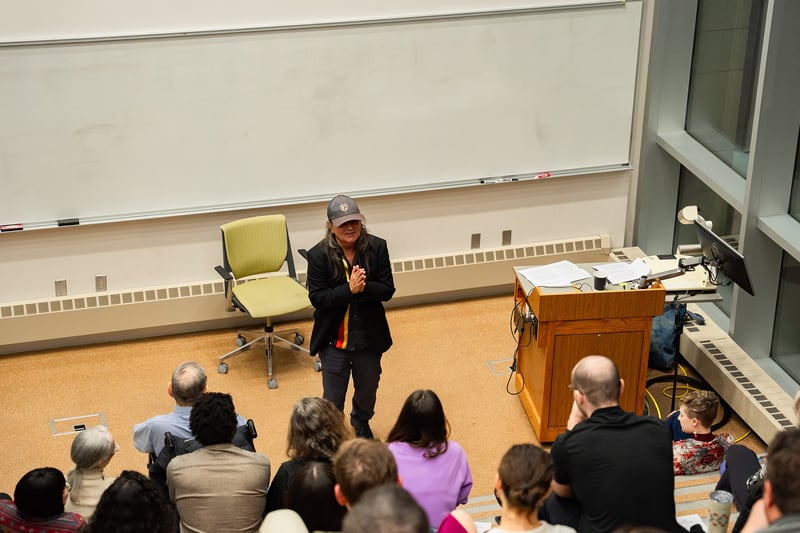Monday, Oct. 14, is Indigenous Peoples' Day. The Native American Institute, or NAI, at Michigan State University, which was established to produce and further scholarship and programming for the benefit of Tribes, Indigenous communities and Native organizations, works to elevate Indigenous voices not only during Indigenous Peoples' Day but all year.
When asked what Indigenous Peoples' Day means, NAI Director Kevin Leonard said, “I think most Natives feel like every day is Indigenous Peoples' Day. But most others see this as a day when we recognize the strength and resilience of Indigenous communities since Europeans first washed up on our shores.

“Indigenous Peoples' Day also comes at a time of year for many Indigenous people when we harvest the foods we tended all year, when we gather with family to celebrate and share that harvest, but also to remember the loved ones we have lost.”
Recently, NAI received a Creating Inclusive Excellence Grant from the Office for Institutional Diversity and Inclusion to reboot the Indigistory program with the Saginaw Chippewa Indian Tribe, or SCIT. The program was originally developed by Professor Emeritus Gordon Henry in 2012 while he was NAI’s director.
“I wanted to reinstitute the program as the full-time director of NAI,” said Leonard. “We are now in the process of collecting and compiling stories from the SCIT community.”
What is Indigistory?
Indigistory brings together knowledge and resources from social sciences, arts and technology to support the creation of digital stories by North American Indigenous community members across Michigan.
“The idea is once we have permission to share and archive the videos, we will start showcasing them to our Indigenous students, faculty and staff on campus,” said Leonard.

Professor Emeritus Gordon Henry Jr. is Anishinaabe and an enrolled member of the White Earth Chippewa Tribe of Minnesota. Photo by Blake Matthews
“We’re at a time when we have more people in our community. For example, I’m trying to learn more about our language, culture and history. But we’re also at a point where we are losing those individuals who are the keepers of that knowledge and that information faster than we have folks who are gaining interest in learning this information. So, Indigistory allows us to capture some of those stories, the history, the cultural teachings from our communities before they’re lost.”
This next phase of Indigistory is set to kick off next year, thanks to the support and guidance of Henry and his two daughters, who have played a pivotal role in restarting it with Leonard.
The Indigistory program will take some time to grow back to what it originally was, but Leonard is optimistic and hopes to see the project expand into other Indigenous communities.
To learn more about Leonard and the Indigistory program, visit the NAI website.
Michigan State University occupies the ancestral, traditional and contemporary Lands of the Anishinaabeg – Three Fires Confederacy of Ojibwe, Odawa and Potawatomi peoples. The University resides on Land ceded in the 1819 Treaty of Saginaw. Read the full American Indian and Indigenous Studies Land Acknowledgement.